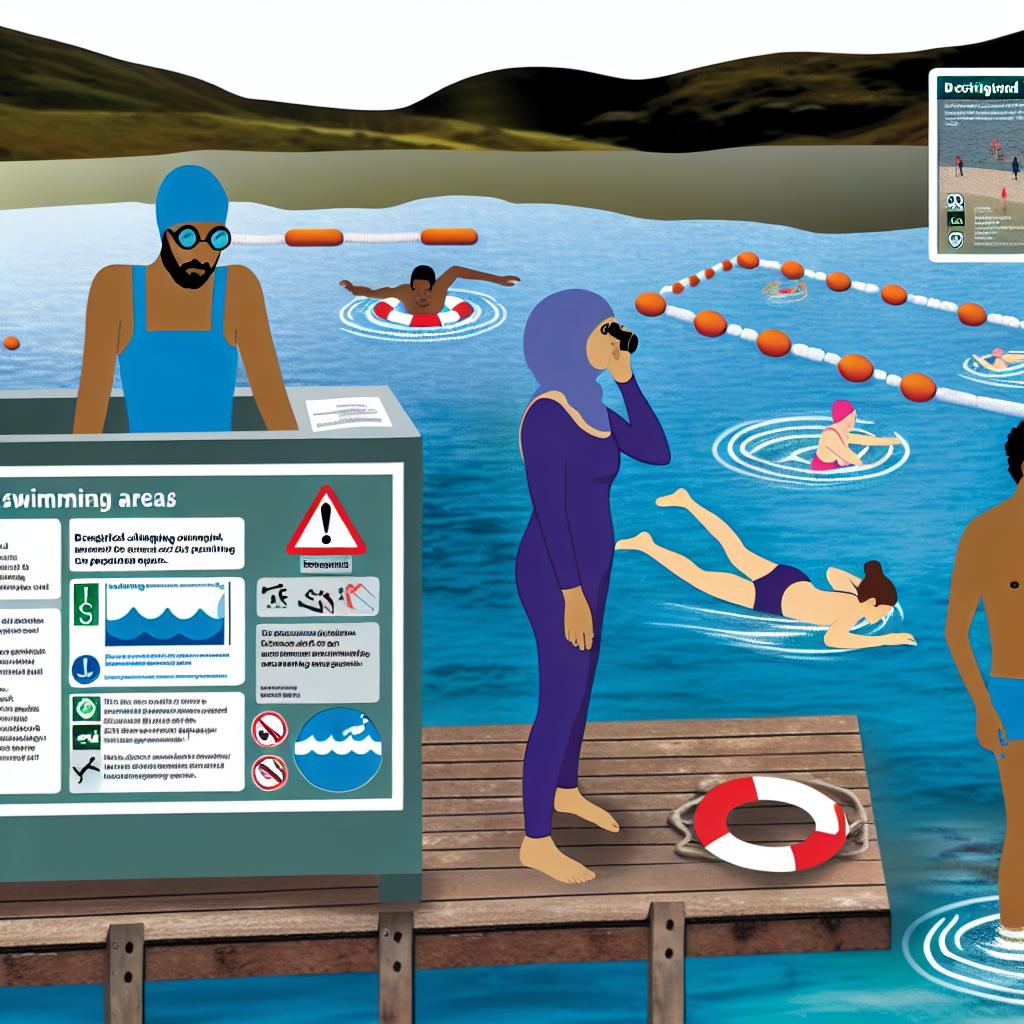Swimming Safety in UK Lakes
Swimming in the picturesque lakes found across the United Kingdom is a serene and often exhilarating activity. With stunning natural settings, these lakes provide an inviting escape, where one can embrace tranquility and enjoy a refreshing swim. However, the enchantment of these waters comes with inherent risks that should not be overlooked. Ensuring safety is paramount, so it is vital for swimmers to adhere to specific guidelines, particularly when swimming in designated areas. The following article elaborates on the general safety practices, the significance of designated swimming areas, and essential guidelines to follow for a safe swimming experience in the UK’s lakes.
Understanding Designated Swimming Areas
Designated swimming areas are explicitly marked sections of lakes deemed safe for swimming activities. These spots are carefully selected and managed by local authorities or community organizations acknowledging the importance of safety. Local councils often establish and monitor these areas, furnishing them with safety features that contribute to a secure swimming environment. These features typically include marked boundaries to prevent swimmers from venturing into hazardous zones, the presence of lifeguards, and clearly displayed warning signs that inform swimmers of the potential dangers and current lake conditions. Opting to swim in these designated areas minimizes risks, providing peace of mind for both swimmers and their companions.
Why Swim in Designated Areas?
Swimming in designated areas offers several notable benefits, enhancing the overall safety and enjoyment of the activity:
– Safety Assurance: Unlike unmonitored sections of lakes, designated areas undergo routine inspections to ensure their safety. These safety checks encompass a range of factors such as water quality, possible physical hazards in the vicinity, and the overall suitability of the area for swimming.
– Lifeguard Presence: Trained lifeguards often supervise designated swimming spots, offering an additional layer of safety. Lifeguards are equipped with the skills and tools required to perform rescues and administer first aid if necessary. Their continuous presence ensures that any emergencies can be swiftly and effectively managed.
– Monitored Water Quality: Water quality is of utmost concern in natural bodies of water. Designated swimming areas frequently undergo water quality assessments by environmental health departments. Such scrutiny guarantees that these swimming spots meet health and safety standards, safeguarding swimmers from potential pollutants or pathogens.
Essential Swimming Safety Tips
Swimming is an enriching activity, but it is important to exercise caution and stay informed about best practices. Whether swimming in designated areas or other parts of a lake, consider the following safety tips to ensure a secure and pleasurable swimming experience:
Check Local Regulations
Prior to visiting any lake for swimming, familiarize yourself with any applicable local regulations. These regulations may outline specific guidelines or rules that swimmers are required to follow. Local council websites or community notice boards often provide detailed information concerning swimming areas, safety tips, and updates on lake conditions. Remaining informed will help in avoiding potentially hazardous situations and ensure compliance with local policies.
Be Aware of Water Conditions
Water conditions in lakes can be unpredictable and may shift rapidly due to various influences such as weather changes or human activity. Always pay attention to any safety signage posted around the lake, particularly those that indicate current water conditions. Warning signs provide essential information about factors such as strong currents, sudden changes in water depth, and other potential hazards. Being vigilant of these signs will help swimmers make informed decisions about their swim.
Ensure Supervision
Supervision is crucial, especially when children or less experienced swimmers are involved. A responsible adult should always be present to monitor such individuals, providing swift intervention if any danger arises. Even in designated areas with lifeguards, personal supervision is indispensable, as it adds another layer of protection and reassurance throughout the swimming activity.
Utilize Appropriate Gear
Wearing appropriate swim gear enhances safety and can prevent accidents. It is advisable for less confident swimmers to use a life jacket or other buoyancy aids. These devices ensure additional security and can prevent drowning incidents by providing the necessary buoyancy to keep a person afloat, especially in unforeseen situations where immediate help might not be available.
Useful Resources
To gather more information about swimming safety in the UK, consider consulting reputable resources that provide expert guidance and updates:
– The Royal Life Saving Society UK is an authoritative source offering comprehensive insights into water safety, including tips for safe swimming practices and resources for training courses.
– The Environment Agency provides detailed information on water quality and safety measures across various lakes and natural water bodies in the UK. Accessing their findings can help in determining which lakes are safest for swimming.
Swimmers who embrace these safety practices prioritize their well-being and that of others around them. By choosing to swim within designated areas, staying informed on local regulations, and adhering to fundamental safety protocols, the gratification of swimming in the UK’s picturesque lakes can be fully enjoyed. Whether enjoying a leisurely swim or undertaking longer excursions, prioritizing safety ensures that these natural wonders are a source of enjoyment rather than risk.
